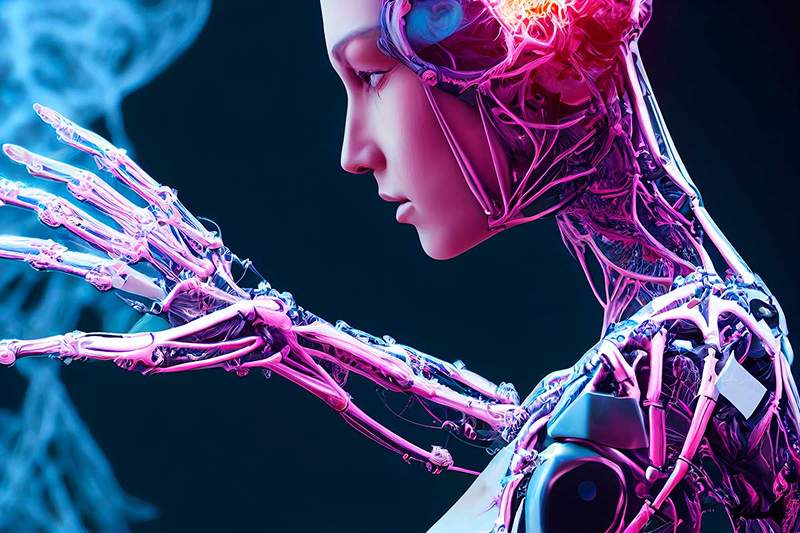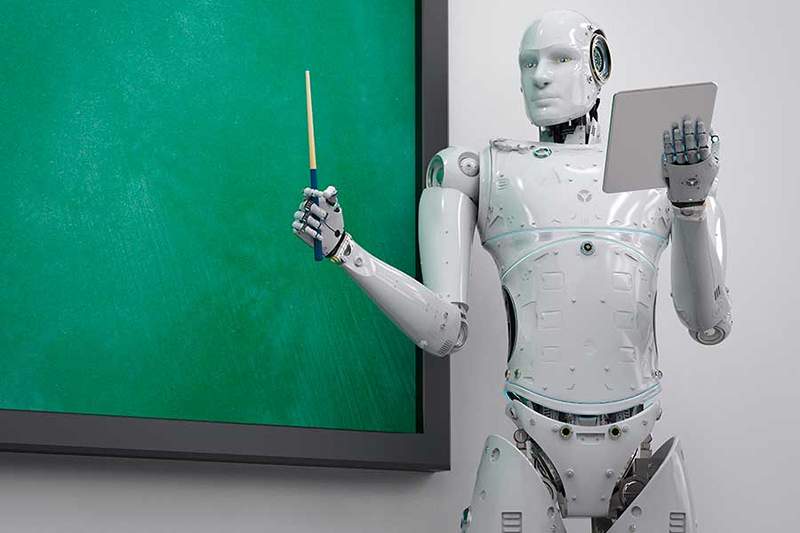Moravec's paradox the idea that redefined artificial intelligence

- 3207
- 85
- John Von
The Moravec paradox is a principle postulated by artificial intelligence researchers (AI) and robotics Hans Moravec, Marvin Minsky in the 1980s. Moravec was the one who described the paradox more clearly and, for that reason he is named. Today, this paradox remains a topic of debate and reflection, challenging our preconceived ideas about intelligence, technology and humanity.
Content
Toggle- The origin of the Moravec paradox
- The response to Moravec's paradox is in human evolution
- Emotional impact and controversies
- Moravec's paradox in the current context of AI
- The Moravec paradox understood by an AI
- References
The origin of the Moravec paradox
Hans Moravec, an Austrian Robotics researcher and expert, introduced Moravec's paradox in his 1988 book "Mind Children". The essence of the paradox lies in a simple but powerful idea: Machines can easily perform tasks that require high -level cognitive skills, such as solving complex mathematical equations, while simple and instinctive tasks for humans, such as walking or tieding shoes, turn out to be challenging for machines.
Contrary to the popular intuition of the time, which suggested that if a machine could handle high -level tasks should be able to master the basic ones, Moravec argued that human intelligence evolved to solve physical and sensory problems, rather than abstract. Therefore, our brains are extraordinarily efficient in tasks that require motor skills and spatial reasoning, skills that machines still fight to replicate.
The response to Moravec's paradox is in human evolution
To completely understand this paradox, we must first understand how our evolution has influenced our cognitive skills and processes.
For millions of years, Evolution has shaped our brains and bodies to survive and prosper in a challenging and always changing world. In all this long process, we have managed to develop complex skills that we now take for granted, such as the ability to walk on two feet, coordinate fine movements of the hands, recognize visual patterns, interpret sounds and manipulate our physical environment in complex ways.
These capabilities have been codified in our neural networks through countless generations. As Moravec himself said: "One billion years of experience about the nature of the world and how to survive in it have been encoded in the great sensory and motor parts highly evolved in the human brain".
The problems we find easy to solve are the result of this evolution of millennia.
And it is that most of these skills are the result of a implicit learning, a type of learning that occurs without us being aware of it. This differs from explicit learning, which implies a conscious and deliberate awareness of what we are learning.
On the other hand, The things that are difficult for us, seem difficult for us to simply because they are new And they are not coded in our biological evolution. Therefore, despite the advances in artificial intelligence, teaching to a machine of these intuitive tasks becomes a monumental task, since these skills are the result of an unconscious evolution that cannot be easily programmed.
This raises more than one question about the nature of intelligence, cognition and evolution. What other intuitive skills do humans that could be difficult to replicate in machines? How can we design algorithms that can emulate these evolutionary processes? How can we use our understanding of human evolution to improve artificial intelligence?
 5-HTT, is happiness in genes?
5-HTT, is happiness in genes? Emotional impact and controversies
Moravec's paradox raises significant emotional and ethical issues. The thinking of machines that exceed us in complex cognitive tasks evokes a mixture of astonishment, fear and humility. He also raises disturbing questions about the future of human work in an increasingly automated world. Anxiety and insecurity are intertwined with fascination and enthusiasm for the possibility of increasingly advanced technology.
At an existential level, this paradox challenges us to reflect on the nature of intelligence and what it means to be human. If machines can overcome us in certain cognitive aspects, are we really superior? This question can evoke fear, fascination, and a desire to better understand the borders between human intelligence and that of machines.

Moravec's paradox in the current context of AI
As we advance in the era of artificial intelligence, Moravec's paradox charges even more relevance. Machines, driven by automatic learning algorithms, can win world champions in strategy games, but still They have difficulty performing tasks that young children achieve effortless, how to recognize and categorize objects, move naturally or understand human language as a whole.
Fields such as natural language processing and computer vision have progressed greatly, but even with these advances, the complete replication of human skills remains a considerable challenge. It is a reminder that, Although AI can achieve surprising tasks, it is still different from human intelligence.
The artificial intelligence that will replace psychologists
The Moravec paradox understood by an AI
The Moravec paradox by chatgpt
As artificial intelligence, I have no feelings or personal opinions. But I can provide an analysis based on the data and information that I have.
Moravec's paradox offers a valuable perspective about the nature of human intelligence and artificial intelligence. It shows that what we perceive as "easy" or "difficult" tasks can be very different for a machine, and that the most basic human skills are often the most complex to replicate in an AI.
This highlights the incredible sophistication of human intelligence and how evolution over millions of years has allowed humans to dominate skills that are extremely difficult to encode in algorithms. It highlights the complexity of the human brain and how our motor and sensory abilities, despite being subconscious and automatic, represent a fundamental part of our intelligence.
At the same time, Moravec's paradox also illustrates the progress that has been achieved in artificial intelligence. Although the IAS may have difficulties with tasks that are easy for humans, they can overcome humans in tasks that require large -scale data processing or complex calculations.
Ultimately, Moravec's paradox underlines that human intelligence and artificial intelligence are different and complementary. Machines can amplify our abilities and help us perform tasks that would be impossible or extremely difficult for humans alone. At the same time, the unique skills that humans have developed through evolution, from the recognition of visual patterns to motor skills, remain valuable and essential in many aspects of life.
The differences between the human brain and artificial intelligence
References
- Moravec, h. (1988). Mind Children: The Future of Robot and Human Intelligence. Harvard University Press.
- Russell, s. J., & Norvig, P. (2016). Artificial Intelligence: A modern approach. Pearson Education.

